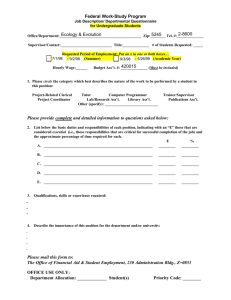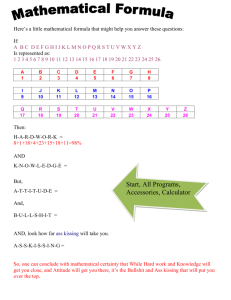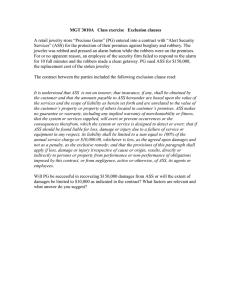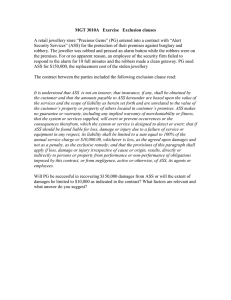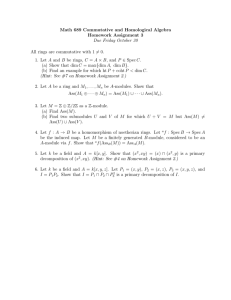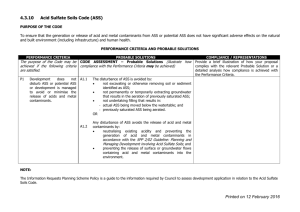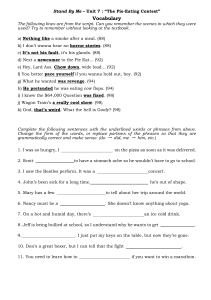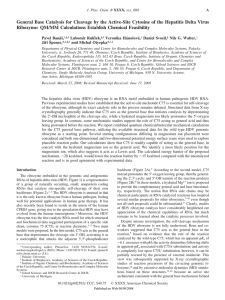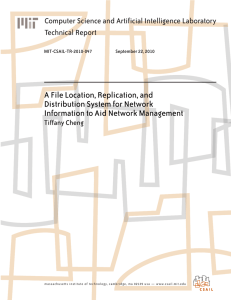Course Outline 2016 ACCTG 102: ACCOUNTING CONCEPTS (15 POINTS) Semester 1 Course Prescription
advertisement
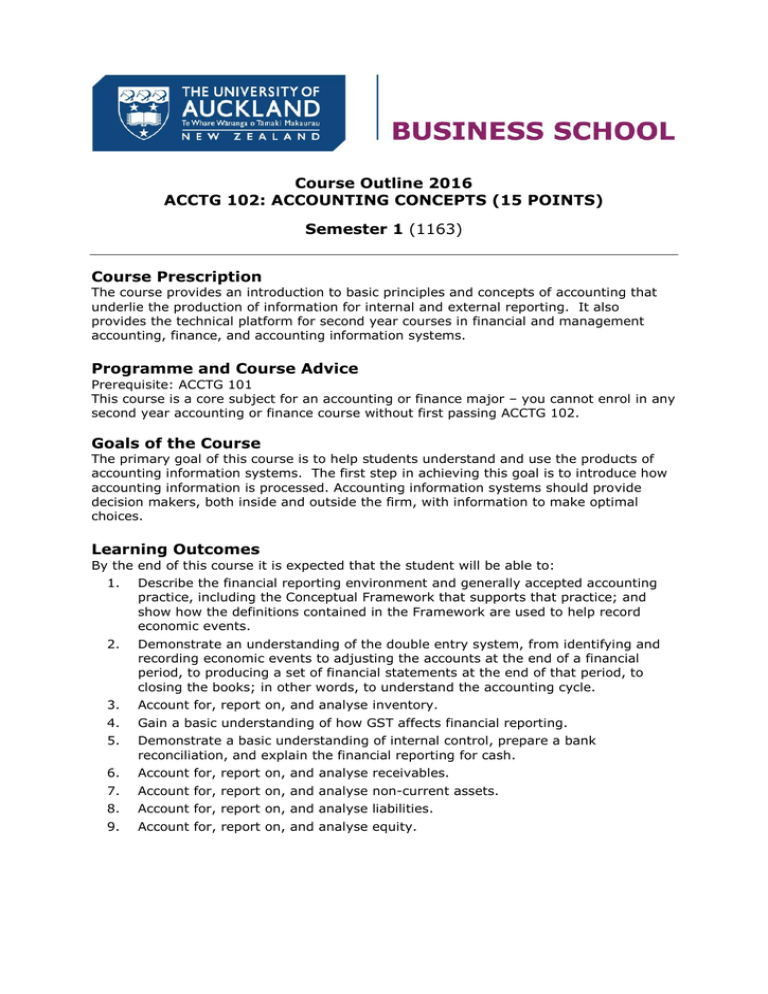
Course Outline 2016 ACCTG 102: ACCOUNTING CONCEPTS (15 POINTS) Semester 1 (1163) Course Prescription The course provides an introduction to basic principles and concepts of accounting that underlie the production of information for internal and external reporting. It also provides the technical platform for second year courses in financial and management accounting, finance, and accounting information systems. Programme and Course Advice Prerequisite: ACCTG 101 This course is a core subject for an accounting or finance major – you cannot enrol in any second year accounting or finance course without first passing ACCTG 102. Goals of the Course The primary goal of this course is to help students understand and use the products of accounting information systems. The first step in achieving this goal is to introduce how accounting information is processed. Accounting information systems should provide decision makers, both inside and outside the firm, with information to make optimal choices. Learning Outcomes By the end of this course it is expected that the student will be able to: 1. Describe the financial reporting environment and generally accepted accounting practice, including the Conceptual Framework that supports that practice; and show how the definitions contained in the Framework are used to help record economic events. 2. Demonstrate an understanding of the double entry system, from identifying and recording economic events to adjusting the accounts at the end of a financial period, to producing a set of financial statements at the end of that period, to closing the books; in other words, to understand the accounting cycle. 3. Account for, report on, and analyse inventory. 4. Gain a basic understanding of how GST affects financial reporting. 5. Demonstrate a basic understanding of internal control, prepare a bank reconciliation, and explain the financial reporting for cash. 6. Account for, report on, and analyse receivables. 7. Account for, report on, and analyse non-current assets. 8. Account for, report on, and analyse liabilities. 9. Account for, report on, and analyse equity. Content Outline Weeks 1 & 2 The Financial Reporting Environment Weeks 3, 4 & 5 The Accounting Cycle Weeks 5, 6 & 7 Inventory and GST Week 7 Internal Control, Cash & Bank Reconciliations Week 8 Receivables Weeks 9 & 10 Non-current Assets Weeks 10 & 11 Week 12 Liabilities Equity Inclusive Learning Students are urged to discuss privately any impairment-related requirements face-toface and/or in written form with the course coordinator. Student Feedback A review of student feedback suggests no endemic course problems need to be addressed. Learning and Teaching There are three contact hours each week. The first two hours are lectures (large plenary theatres), and the third hour is a smaller lecture/tutorial. There is no fourth hour. It is essential for your learning that you: a) prepare for lectures by reading the assigned material and working through the lecture problems and filling in the blanks (on the power-point slides), and b) prepare for the tutorials by working through the designated tutorial exercises and problems, and c) complete all assignments. Teaching Staff Course co-ordinator and lecturer Glenn Rechtschaffen Office: OGGB 5.101 Phone: 373 7599 Ext. 87180 E-mail: g.rechtschaffen@auckland.ac.nz Tutors To be announced on Canvas. Learning Resources Textbook Weygandt, et.al., Financial Accounting, IFRS edition, 3e (Wiley, 2015). An e-book version of the textbook can also be purchased at a price much lower than the hardcopy price. Please see the file in the Information Folder on Canvas for more information. Walk-in Help Centre If you have any questions, the ‘walk-in’ help centre is available. Location and times will be announced on Canvas. 2 Canvas Access Canvas to view announcements, view your coursework marks, download instructional materials, and access lecture recordings. Instructional materials include solutions to lecture, tutorial, and assignment problems, old tests and exams and their solutions, and forms for working certain assignment problems. Assessment Your final grade will be determined as follows: Course work Weighting Assignments (10) 15% Mid-Semester Test 25% Final Examination 60% As part of the requirements to pass, you must score at least 50% on the final examination. We wish to encourage maximum effort throughout the semester; therefore, there is no formal “plussage”. The broad relationship between the above assessments and the course learning outcomes is as follows: L.O. Ass 1 Ass 2 Ass 3 Ass 4 Ass 5 Ass 6 Ass 7 Ass 8 Ass 9 Ass 10 Test Exam 1 2 3 4 5 6 7 8 9 X X X X X X X X X X X X X X X X X X X X X X X X X X X X X X X X X X X X X X X X INCLUSIVE LEARNING Students are urged to discuss privately any impairment-related requirements face- toface and/or in written form with the course convenor/lecturer and/or tutor. 3
